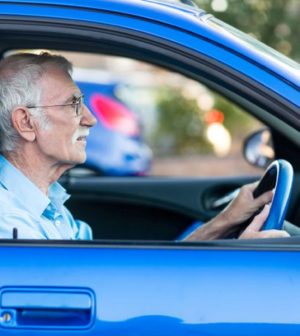- Skip Storing This Everyday Product in the Fridge Door
- Green Tea + B3 Pairing May Boost Brain Health
- Navigating Your Midlife Crisis: Embracing New Possibilities
- City Raccoons Showing Signs of Domestication
- Mapping the Exposome: Science Broadens Focus to Environmental Disease Triggers
- One Week Less on Social Media Linked to Better Mental Health
- Your Brain Changes in Stages as You Age, Study Finds
- Some Suicide Victims Show No Typical Warning Signs, Study Finds
- ByHeart Formula Faces Lawsuits After Babies Sickened With Botulism
- Switch to Vegan Diet Could Cut Your Greenhouse Gas Emissions in Half
Beware of Drowsy Driving as Daylight Saving Time Begins

The switch to Daylight Saving Time can increase the risk of driver fatigue and crashes, but there are a number of ways to reduce the danger, an expert says.
“Any time change can exacerbate drowsiness because your internal clock has not adjusted to the time change. This can lead to disruptions in sleep until your body adjusts, which can take a few days to a week,” said Jeff Hickman, a research scientist at the Virginia Tech Transportation Institute in Blacksburg.
After clocks spring ahead one hour at 2 a.m. on Sunday, try to avoid driving during rush hours and in early morning, when crash risk increases, he suggested. Driving between 2 a.m. and 4 a.m. is particularly dangerous, because your circadian rhythm is at its lowest during this two-hour period.
Drivers should try to sleep at least seven to eight hours, Hickman said. But one night of good rest may not be enough if you have had several sleepless nights. If that’s the case, you’ll need several nights of restful sleep to compensate.
Watch for signs of drowsy driving, including slow eyelid closures, yawning, gentle swaying of the head, fidgeting in the seat, trouble staying in your lane, difficulty maintaining speed and slow reactions, Hickman said in a Virginia Tech news release.
Be extra careful in situations that increase drowsiness, including driving alone, monotonous road conditions with little change in scenery, long drives, and extended periods of heavy traffic, he advised.
More information
The U.S. National Highway Traffic Safety Administration has more on drowsy driving.
Source: HealthDay
Copyright © 2025 HealthDay. All rights reserved.










